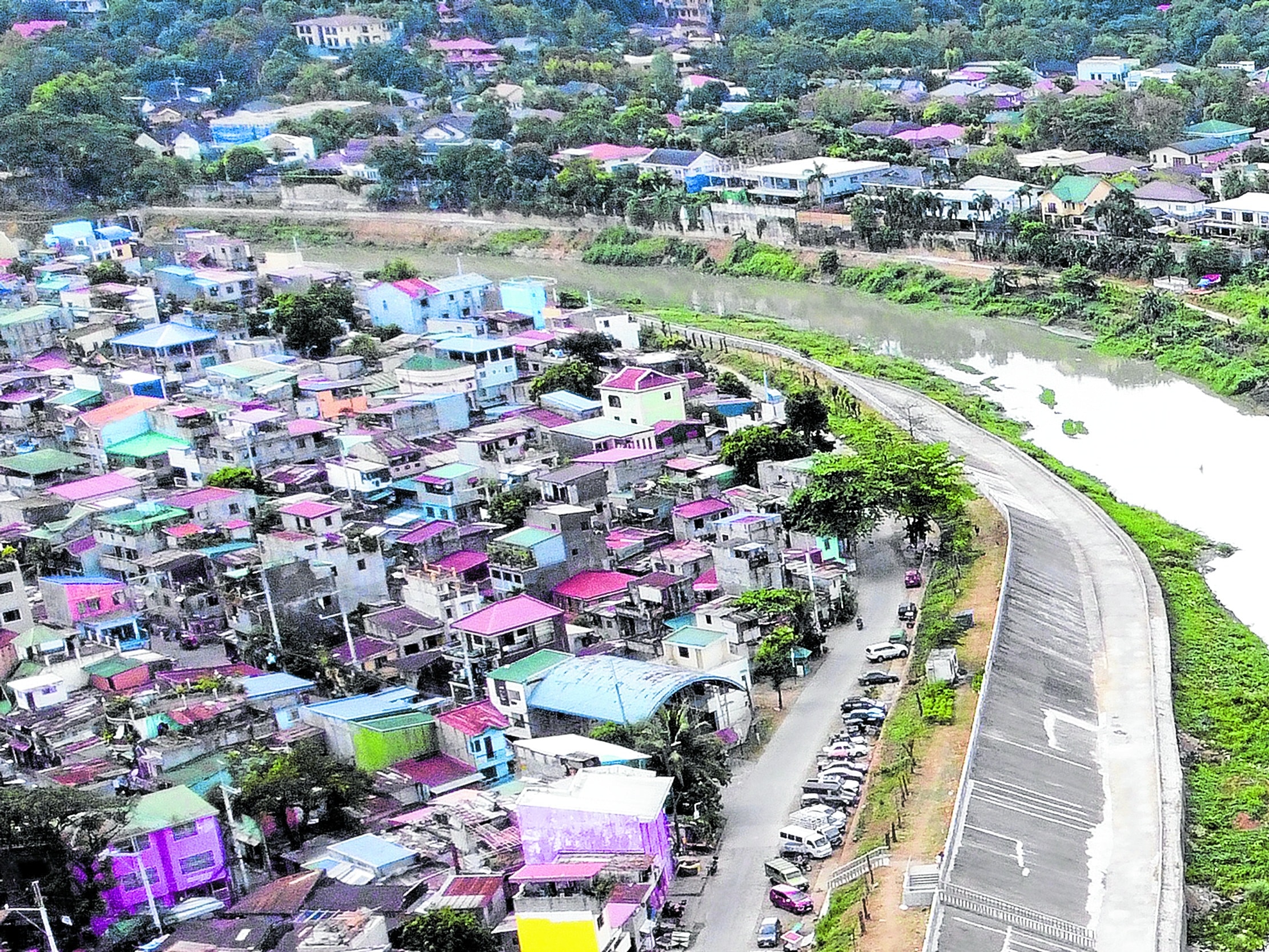
RISK FACTOR Houses crowd both sides of Marikina River in Concepcion, Marikina City, in this January 2024 photo. If not properly managed, riverine disasters may derail our towns’ and cities’ progress with severe long-term consequences. —Grig C. Montegrande
MANILA, Philippines — The Philippines is the fourth most vulnerable country to extreme weather events such as typhoons and flash floods, according to the Global Climate Risk Index 2021. Rapid population growth and urbanization of low-lying areas are further increasing flood risk and endangering unprotected communities. Many low-income communities in flood-prone areas are among the most vulnerable to natural hazards.
Our towns and cities need to prepare for more severe and more frequent river and urban flooding in the future with the onslaught of severe storms and heavy rainfall due to climate change. The negative impacts on people’s livelihoods, agricultural yield, and human health due to increased flooding are significant. If not properly managed, riverine disasters may derail our towns’ and cities’ progress with severe long-term consequences.
Article continues after this advertisementThe government’s approach to the challenges of riverine disasters, however, continues to emphasize conventional flood control structures such as dikes, dams, and engineered channels that modify river channels and cut them off from their floodplain. These structures tend to be rigid, not easily adapted to increased flooding events, and have adverse environmental consequences. Such actions limit the natural hydrologic benefits of floodplains such as storing floodwaters, improving water quality, providing habitat for wildlife, and supporting a multitude of cultural activities.
FEATURED STORIES GLOBALNATION DILG: Some Pogos using ‘disguises’ to thwart ban GLOBALNATION Veloso PH-bound; freedom still up to Marcos, Jakarta GLOBALNATION PH to honor Indonesia's conditions in Mary Jane Veloso's returnIn other words, the government’s conventional flood control approach not only alters the natural character of rivers and floodplains, but also does not take advantage of the contribution these resources make to reduce flood risks, restore floodplain ecosystems, and ensure food security.
An alternative approach is natural river management (NRM), which is a way to harness the functions of natural river systems to nurture climate resilience at a lower cost while also achieving environmental and social benefits. NRM reflects the increasing realization that the hard (gray) infrastructure of conventional flood control systems alone are no longer sufficient to build climate resilience.
Article continues after this advertisementWhile gray infrastructure will continue to be critical to mitigate flood risk, especially in dense urban areas with limited space, it is no longer expected to provide the integrated and higher levels of flood protection needed in the future with more severe weather events.
Article continues after this advertisement Green infrastructureNRM recognizes the value of Nature-based Solutions (NbS), particularly green infrastructure, which is increasingly being adopted worldwide as an effective strategy to build resilience to natural disasters. As an ecosystem-based adaptation approach, green infrastructure protects people against floods, water scarcity, landslides, and impacts from extreme weather events while addressing climate change and biodiversity threats. Green infrastructure often is in the form of functionally designed green spaces that serve hydrological functions, among other ecosystem services, and can also be enjoyed for recreation.
Article continues after this advertisementIn many situations, the adoption of NRM will involve a systematic integration of green and gray infrastructure and other site-appropriate NbS. The more severe and frequent weather events due to climate change have revealed the limitations and inability of existing gray infrastructure alone to manage floods effectively. The integrated approach that combines NbS with gray infrastructure has increasingly proven to be an effective contributor to flood risk management.
In river systems, an integrated approach that respects river dynamics and ecosystem functions provides effective flood management interventions, namely flood conveyance, water retention and detention, river bank erosion control, and flood impact reduction.
Article continues after this advertisementEvery river basin is different, which means that for the reduction of flood and erosion risk in river basins, there is no one-size-fits-all example available. As such, risk assessment and consultation with local stakeholders are required to understand the problem and select the most promising interventions.
While the inclusion of NbS into managing rivers has garnered wide attention, it is still uncommon in project design and implementation. There are several reasons behind this, but the main obstacle we need to hurdle is the popular perception that gray infrastructure is the only solution, and the misconception that green infrastructure is ineffective.
Subscribe to our daily newsletter
Nathaniel von Einsiedel is a fellow emeritus of the Philippine Institute of Environmental Planners and the principal urban planner of CONCEP Inc.au777
READ NEXT Roadmap for PH: Global Education Meeting seeks urgent reforms Amid Earth’s heat records, annual carbon emissions still inc... EDITORS' PICK NBA: Warriors roll past Hawks for fifth straight win at home Fil-Am siblings shot dead at scene of house fire in California House execs: 170,000 typhoon victims in Bicol get P850-M aid in BPSF Philippines posts 3rd straight podium finish at Miss CosmoWorld pageant Who is Neca Denise Lagria? The woman found dead near SRP seawall X enhances video playback with ‘pinch-to-zoom’ update MOST READ LIVE: Gilas Pilipinas vs New Zealand at Fiba Asia Cup Qualifiers Comelec to resolve next week appeals of bets declared as nuisance House probe retraces bulk withdrawals of confidential funds House probe: OVP, DepEd CFs received by same man, different signatures Follow @FMangosingINQ on Twitter --> View comments